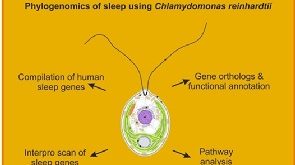While the Pause Button for human life may seem like Sci-Fi, it can actually help improve the outcomes of in-vitro fertilization (IVF) techniques
While we still have a long way to go in terms of fully understanding the human body and mind, progress is certainly being made in that direction. One area of great interest is how the human body can grow from an embryo to a fully formed baby. When talking about pregnancy, it is generally believed that humans have no control over the development of the embryo. However, a new study reveals that humans may actually have the capability to use the Pause Button for human life. Although this capability is currently in dormant form and not actively used during pregnancies.
What is the pause button for human life aka embryonic diapause?
Scientists have noted that some mammals have the capability to alter the development rate of the embryo. This is done to optimize the survival rate of both the embryo and the mother. In technical terms, this adjustment in the development of the embryo is referred to as the embryonic diapause. This process is usually seen to occur during the blastocyst stage. That is a time when the embryo has still not attached itself to the uterine wall.
During this time, the pregnancy gets extended. The embryo is not harmed, as it can float freely. Depending on the situation, the pause button can be active for several weeks or even months. When the situation becomes favorable, the embryonic development process can be resumed normally.
Can humans use embryonic diapause?
As mentioned earlier, the human ability to choose embryonic diapause is in a dormant stage. But scientists have been able to demonstrate this ability in human stem cells in a laboratory environment. The research project was conducted by the Institute of Molecular Biotechnology (IMBA) of the Austrian Academy of Sciences in Vienna in collaboration with Max Planck Institute in Berlin. Researchers were able to achieve a diapause-like state for human stem cells as well as with blastoids. The latter are essentially lab-grown blastocysts. Details about the research project were recently published in the journal Cell.
Researchers have found that adjusting the mTOR signaling pathway can help achieve a diapause-like state. The mTOR signaling pathway is a specific type of molecular cascade. It has been identified as one of the primary controllers of growth and developmental progression, seen with mouse embryos. When the mTOR inhibitor was applied to human stem cells and blastoids, it revealed that a diapause-like response can be achieved from the molecular machinery.
The dormant state noted during the diapause period is marked by reduced cell division. Also, there is slower development and the embryo’s ability to attach to the uterine lining is reduced. Researchers also noted that this dormant stage of the embryo is available for a limited period only. The processes noted during the experiment were similar to the diapause system that is used by some mammals.
Practical uses of the pause button for human life
A good thing about the research is that the diapause state can be reversed via the reactivation of the mTOR pathway. That means the embryo can start developing normally after the brief period of remaining dormant. Researchers concluded that humans currently do not have the ability to achieve diapause like some other mammals. However, humans may have had this ability in the past. But since the ability is not fully erased, it can probably be activated when the right conditions emerge.
As of now, the research project can find use in reproductive health processes such as IVF. For example, slowing down the development process can provide more time to evaluate the health of the embryo. Accordingly, doctors can find the most suitable time to implant the embryo inside the uterus. However, a lot more research and fine tuning will be needed to make this process available on a commercial scale.
 Newspatrolling.com News cum Content Syndication Portal Online
Newspatrolling.com News cum Content Syndication Portal Online







